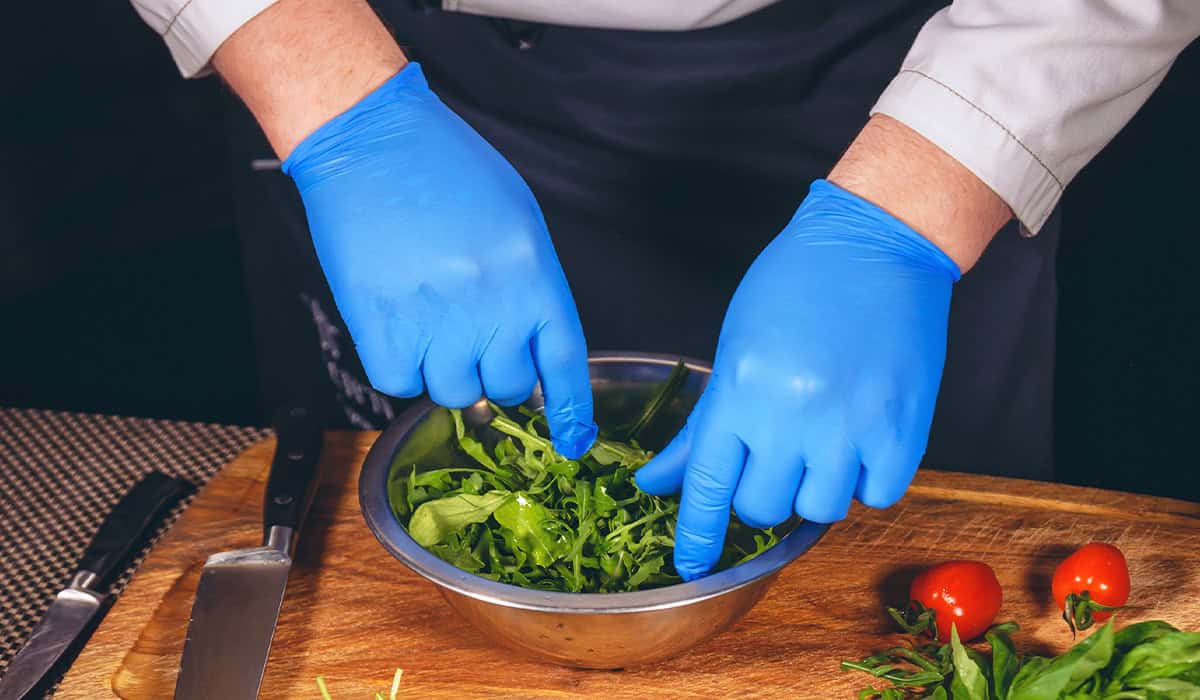
There are a variety of different protective gloves available, all of which have different areas that they work well in, so it is important to look into the types of gloves and consider what you would use them for.
Different types of safety gloves
The different types of safety gloves lend themselves to different professions and different situations. Some professions may require different types of gloves as they will be used at various times, while others will only need the one type.It is important to research the multitude of gloves available and the materials that they come in to ensure that you are getting the best work safety gloves for you and your employees.
All protective gloves are thoroughly tested and checked against either European standards or American standards depending on where they are produced to ensure that they will provide adequate protection.
Disposable gloves

Disposable gloves are primarily for one time use, you will use them and once they have been taken off, they will be thrown away. They are primarily used in a healthcare or culinary setting, due to their ability to restrict cross contamination.
Latex is the most commonly used material for disposable gloves, in fact it is the material that has been used to make disposable gloves for the longest period of time. However, there are people who are allergic to latex and so are unable to use these. The next most popular material for single-use gloves is Nitrile, which is thicker than latex but just as durable. The third material to make disposable gloves is vinyl, typically used for food preparation and in the hair and beauty industry.
In the healthcare setting, disposable gloves would be used for things such as dealing with bodily fluid, touching someone else’s skin (particularly near a cut), or when applying medicines. Whereas in a culinary setting, they would be used for food preparation to ensure the highest levels of hygiene occurred.
Heat resistant gloves

Heat resistant gloves are used to keep workplace burns and other thermal injuries to a minimum.
If you are looking into using heat resistant gloves you need to think about how often they will be used, what temperatures they will be exposed to as well as the length of time they will be in contact with the heat.
You will also want to weigh up the above factors when deciding on the material of the gloves that you are using. For example, if you were to buy flame retardant leather gloves, they would be ideal for protection from flames, but wouldn’t last long term as they become less flexible the longer they stay around the heat. Similarly, acrylic liners would add to the gloves durability but would make them a lot heavier than normal.
Some examples of when you would need to use heat resistant gloves are:
- When handling chemicals.
- Working with metals at high temperatures.
- Working with open flames.
- Handling hot equipment.
- Dealing with electrical equipment that will potentially overheat.
Puncture resistant gloves

A commonly used form of PPE is puncture resistant gloves, because these will be able to protect you from being pierced or scratched by sharps (objects and tools that have a sharp edge). For more information on sharps read How to Safely Dispose of Sharps and Needles.
Puncture resistant gloves offer protection both from needlesticks, when a used needle pierces the skin, and blunt punctures, being pierced by a blunt object. It is important to consider what you will primarily be using the gloves for and how thick you will need them to be for your protection.
Like with the heat-resistant gloves there are several different materials that you have available to you when looking into puncture resistant gloves, which all have pros and cons depending on the situation you are using them in. Metal mesh gloves for example degrade over time and aren’t very comfortable but they do provide protection from both blunt punctures and needlesticks, or there are Nitrile gloves which are mainly one-use gloves used for professions such as dentistry and medicine as they offer protection against punctures.
Cut resistant gloves

These gloves are designed especially for preventing lacerations. They protect your hands from getting cut or sliced open by tools and other objects in the vicinity. They are commonly used for household activities like gardening to prevent any injury to your hands.
Cut resistant gloves will also help to improve your grip due to their textured fingers which can come in handy when handling sharp objects as you are then less likely to fumble them.
Some examples of professions that require cut resistant gloves are:
- Carpentry or woodworking
- Blacksmiths
- Mechanics
- Construction
- Gardeners
- Chefs
- Glass handling and manufacturers
- Butchers
Finding the right size gloves for you
It is important that the gloves being used will fit the person wearing them both for their comfort and for their safety. After all, you won’t be able to move as freely as needed if the gloves are too tight and could potentially cut off circulation, but if they are too loose you will find that they impede your work just as much by folding over themselves. If an employee is struggling to do the work with the gloves on, they may make the decision to continue without them, which will lead to serious injury.When ordering gloves, check the size charts that are provided on the product page. Or, when buying disposable gloves for a number of people, you could buy multiple boxes in varying sizes so that there is a size that will fit everyone.
Our gloves
Read our other blogs for more information on first aid or contact us for further advice and information on our products.
By Sarah Mason






